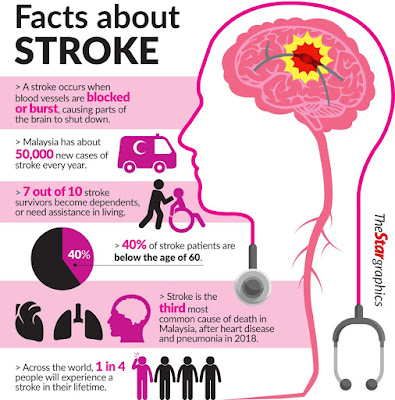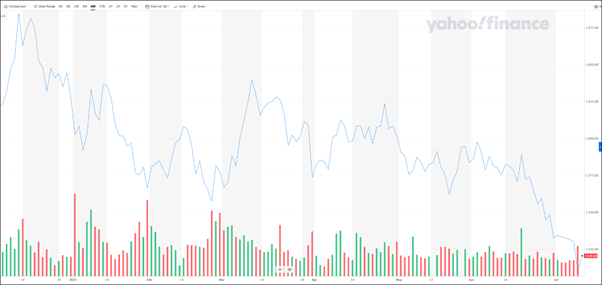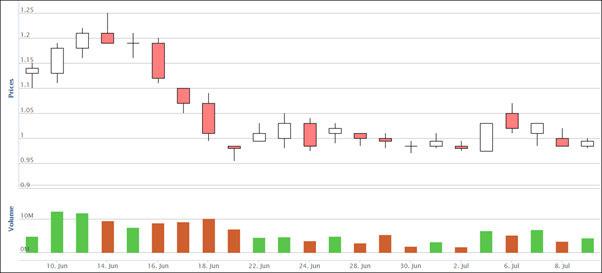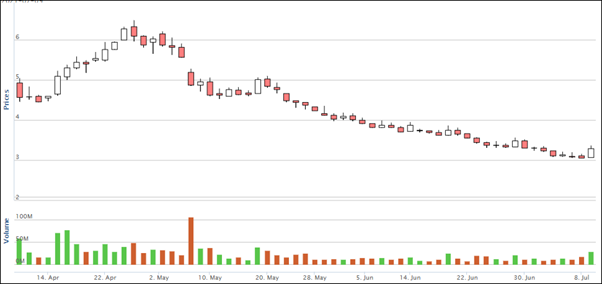Retiree Betty Ng, who turned 70 in June, has been a stroke survivor for seven years. On her birthday, she started a campaign to raise funds for the National Stroke Association of Malaysia (Nasam).
But, for the past one year, the pandemic has somewhat impacted activities at the centre. Although Nasam is still open for one-on-one therapy, there are no in-person group therapy activities and social events which are a major part of a stroke survivor's recovery process, she says.
“Stroke rehabilitation can take a heavy toll physically and emotional on a stroke survivor and their family members. But Nasam has always been a safe space where they can go to for recovery, meet other survivors and be motivated to embrace life after stroke,” she says.
This is why Ng wants to help raise funds for Nasam, an NGO that relies largely on donations from the public to stay afloat during the difficult pandemic time.

“As an NGO, Nasam relies largely on public donations from members of the public – both corporations and individuals - in order to survive. So I hope that my initiative will help Nasam stay afloat during this time so that they can continue to serve the stroke community, ” says Ng.
The determined Ng, who suffered from a stroke in 2014 during surgery to remove a benign brain tumour, adds that she wants to be a motivator for all who have been stricken with stroke, because as a survivor herself, she understands what they’re going through.
After she had her stroke seven years ago, she could not stand, nor use her left hand or leg.
“I had problems eating, suffered from a slight speech impairment, couldn’t recall words and had difficulty completing sentences. I had to be bathed, dressed, and fed, and even to wear diapers,” she recounts.
“I felt really miserable because I couldn’t help myself. I wasn’t used to being dependent on anyone,” she says.
Ng was in hospital for six weeks and after she was discharged, she could walk with the aid of a quadripod walking stick, and was cared for by her daughter.
Determined to get back to normalcy quickly, Ng started exercising to strengthen her left arm and leg, and improve her speech.
“I pushed myself to the maximum as I was impatient to get back to as normal a life as possible,” she says.
Ng’s daughter would prepare her food and then go to work, but be back to help with Ng’s exercises in the evening.
“I was on my own the whole day, and would spend the time exercising, doing puzzles such as crosswords, and colouring to stimulate my brain.
“In the evenings, I would do my exercises – under the supervision of my daughter - which included walking up and down the stairs and to-and-fro without the walking stick,” says Ng.
Ng started rehabilitation daily at Nasam in Dec 2014, in addition to her rehabilitation at the hospital.
Fourteen months after her stroke (in Aug 2015), she was certified fit to drive.
“I was thrilled because it gave me so much more independence. The following year, my daughter bought me a car and nothing stops me now ... except the MCO,” she says.
But, since the pandemic, Ng’s group rehabilitation sessions at the centre have come to a halt.
“The MCO has made things difficult because I’m not able to move around freely and frequently," she says.
Before the first MCO last year, Ng used to spend a lot of time at Nasam and says it was “like a second home” for her and other stroke survivors.

“I would bring my 90-year-old mother and also sisters along for the social gatherings and outings organised by Nasam. It gave us the opportunity to bond and have fun together as a family,” she says.
Ng says that Nasam has helped her grow her confidence and self-esteem.
“I’ve been given the opportunity to reach out to other stroke survivors and their families and I’m grateful for the chance to help others,” says Ng who now is a Nasam ambassador and also on its mentor-mentee programme.
As an ambassador, she helps create awareness through speaking at public forums about stroke and the challenges to recovery. For the mentor-mentee programme, she counsels and motivates stroke survivors who are going through difficulties.

“I do this alongside Nasam’s founder and chairman Janet Yeo, who created and manages the platform,” she adds.
“Nasam has shown us that there is life after stroke by challenging stroke survivors to achieve a greater recovery by giving us so many wonderful experiences and opportunities like The Stroke Games, as well as social integration and empowerment to return to the community or back to work,” says Ng.
“I started the fundraising campaign, which will run until Jul 17, because Nasam is like family to me. I want to help stroke survivors and see them able to lead a better life,” she concludes.
For more info, visit: SimplyGiving: There is life after stroke
Throughout the pandemic, the National Stroke Association of Malaysia (Nasam) remains open to serve stroke survivors and their families, who may need help with rehabilitation and support.
“Although we can’t conduct group therapy sessions nor have social activities – which are a very effective means of rehabilitation and psycho-social support for stroke survivors – during this time, one-on-one therapy sessions are still ongoing, ” says Nasam communications coordinator Vanaja Dhanan.
“Our group therapy sessions are now available on Zoom, ” she adds.
Creating public awareness

Nasam’s public awareness activities such as forums on stroke prevention and awareness, educational talks, and other such events, have also been shifted online during the pandemic.
“But even though we can do this through Zoom and other online platforms, there are certain segments of the community who have no access to online facilities, ” says Vanaja.
She adds that there has also been a decrease in participation in group therapy sessions as many stroke survivors can’t access the Internet because they don’t have device nor the support to do so.
“They may not have family members who are able to support them to get online at home. Some are also unable to follow these online sessions as they’re unable to process the information after their stroke, ” she explains.
And, although Nasam is open for face-to-face support during the various MCOs, following strict Health Ministry guidelines, there is still a lot of fear among the people to come out and seek support, she says.
“This too has impacted the recovery of stroke survivors, especially those with visual, spatial and cognitive issues, ” says Vanaja.
The rehabilitation of the stroke victims also centres around social outings and gatherings at Nasam, and these are also affected by the pandemic.
Nasam’s annual events such as The Stroke Games, Walk For Health and Food & Fun Fair, have all come to a halt during the pandemic.
Embracing the new normal
 Nasam founder and chairperson Janet Yeo started Nasam in 1996 while she was recovering from a stroke. Photo:
Nasam founder and chairperson Janet Yeo started Nasam in 1996 while she was recovering from a stroke. Photo: There is also a Stroke Mentoring Facebook group, which is managed by Nasam founder and chairperson Janet Yeo who formed the association in 1996, when she herself was recovering from a stroke.
The mentoring group is supported by both Yeo and other stroke survivors who are able to counsel and help survivors going through difficulties because they themselves have gone through it before and understand what it involves.
Prevention is better than cure
Yeo highlights that that it’s very important for individuals in the high-risk group – smokers and those with conditions such as high blood pressure, cholesterol and diabetes – to lead a healthy lifestyle.
“There needs to be a balance between work and leisure. For those who are working from home, be sure to set clear boundaries – a time when you’re available for work and a time when it’s your free time,” she says.
“It’s also important to stay physically active and exercise regularly. Take your medications and go for your medical check-up as scheduled,” she adds.
“Stay physically and mentally active. And, most of all - seek help if you need it. Don’t go through it alone,” says Yeo.
Caregiving for a stroke survivor is no easy task and caregivers may often feel discouraged and alone. To help them, Nasam also has a Caregiver Support Group.
“Carers who are going through difficulties can be connected to a fellow caregiver or even a stroke survivor who is recovering well and able to help the family move ahead,” she says.
As an essential service, Nasam centres continue to operate throughout the pandemic, offering rehabilitation and therapy from Monday to Friday, 9am to 5pm. Stroke survivors or their family members can also call the Nasam Helpline at 018-222 1878 for support or help.



























